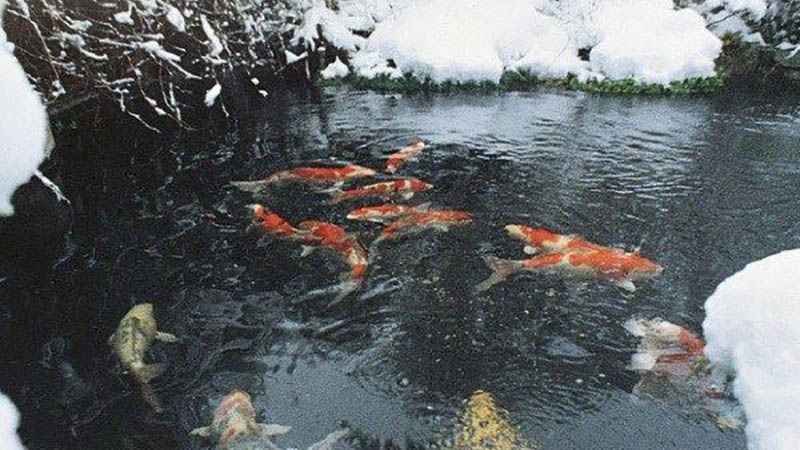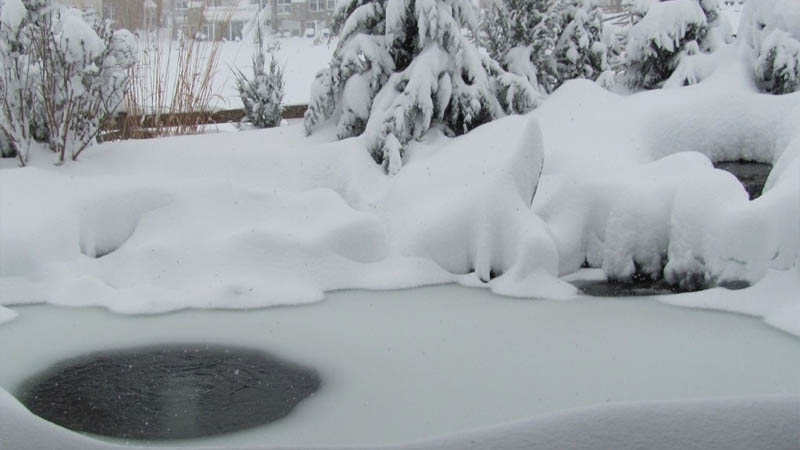De-icers float in your pond and keep a hole open in winter ice. This allows bad gases to escape. These gases, which come from exhaling fish and decomposing debris, would otherwise build up under the ice and suffocate your pond life. A de-icer will heat up just enough to form a small opening in the ice. It is not the same as a pond heater and will not cause a significant increase in your pond’s overall temperature. That means your fish will still enter torpor, a semi-dormant state of hibernation.
As temperatures drop, sections of your pond that aren’t close to the de-icer will still freeze over. This is perfectly fine.

Whether or not you need a pond de-icer depends on the weather and how closely you want to keep an eye on your pond. Many pond owners can keep a hole open in the ice by simply running an aerator about 6 inches below the water’s surface.
The bubbles not only infuse your pond with some much needed oxygen but also breaks the surface tension of the water and prevents ice from forming in that area.
A pond de-icer is nice to have as a backup. It will give you peace of mind knowing your fish won’t suffocate if the aerator fails. It also provides a safeguard during extreme cold, when the aerator might not be enough to ward off ice.
If your pond’s surface should freeze, your initial inclination may be to break the ice open, this is actually the worst way to go about aerating. Fish are much more sensitive and delicate than you might realize, and banging on the ice can cause sound waves that can be very detrimental to their health. For this reason, it is strongly recommended that you take a much more gentle approach to aeration.
In most cases, you can create the necessary hole by either boiling a pot of water and placing it onto the ice. You can also plug in a pond de-icer and position the unit on the frozen pond and it will eventually melt a suitable hole.
Should you decide to use a de-icer in your pond, run it in addition to, and not instead of, an aerator or air pump.
